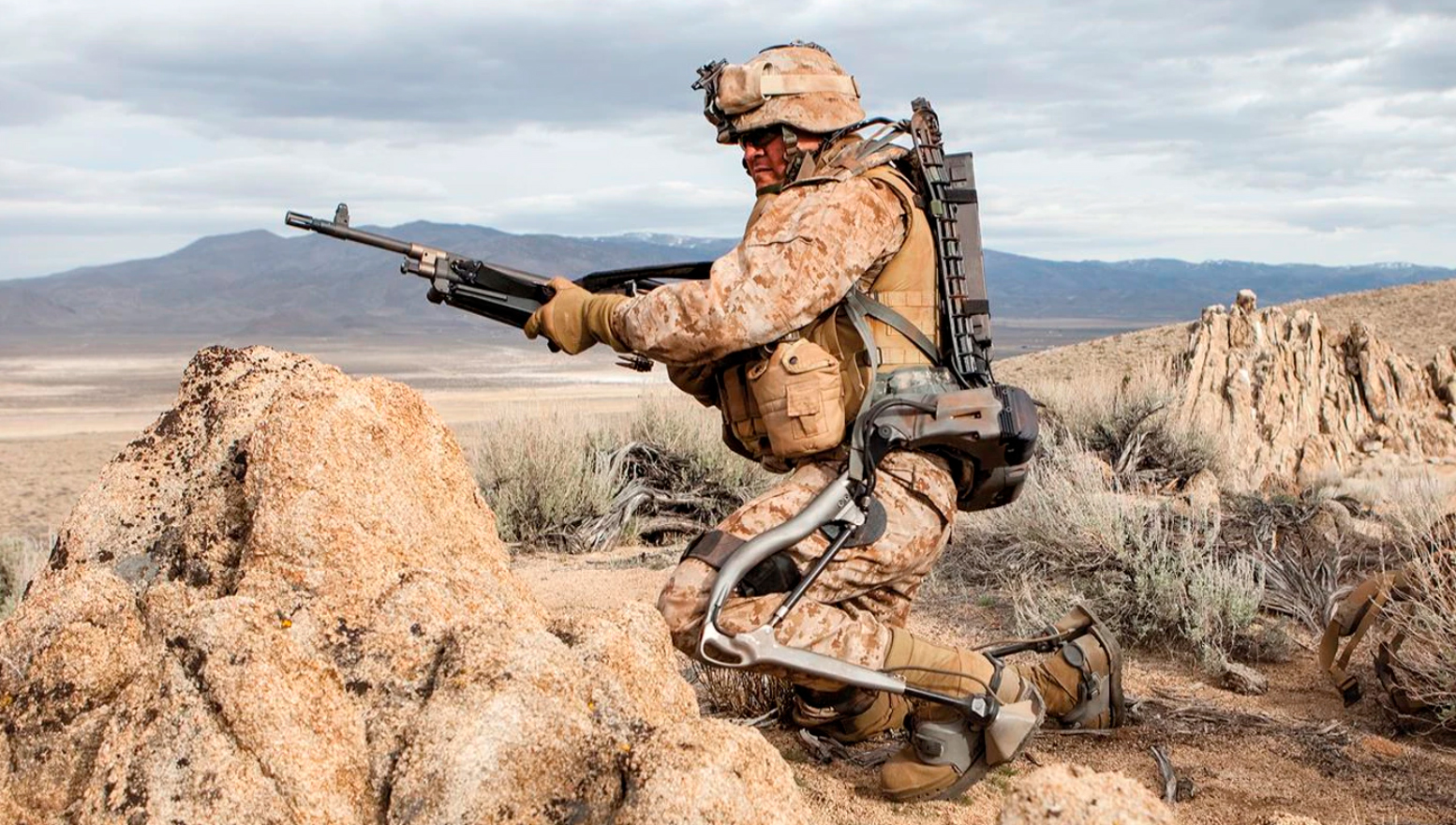Los expertos en robótica del US Army, convocan a la Industria para participar en la búsqueda de soluciones relacionadas con la tecnología de “exoskeletons”. Estos sistemas incorporados en el ser humano, permiten incrementar notablemente la fortaleza y resistencia de los soldados en operaciones, reduciendo el riesgo de lesiones cuando se realizan esfuerzos extremos o repetitivos, tanto en acciones de combate o en actividades típicas de campaña. La convocatoria se orienta inicialmente a la evaluación del Estado del Arte, el mercado específico y los principales actores del sector, que puedan aportar soluciones tecnológicas de altas prestaciones, bajo peso, gran ergonomía, baja dependencia de fuentes externas de energía, etc.
NATICK, Mass. – U.S. Army robotics experts are reaching out to industry to find companies able to develop exoskeleton technologies to improve soldier performance during repetitive tasks on the battlefield or in moving cargo.
Officials of the Army Natick soldier Systems Center in Natick, Mass., released a request for information (W911QY-21-R-CDDC-EXO) on Monday for the Powered and Unpowered Exoskeletons for Human Performance Augmentation During Maneuver or Logistics Support Activities project.
Army experts see exoskeletons as a promising way to improve soldier strength, endurance, and ergonomics safely and while reducing the risk of physical injury while lifting heavy loads, traversing challenging terrain, or carrying out repetitive motion.
This notice is to help Army researchers evaluate the state of the exoskeleton market and its enabling technologies. Researchers primarily are interested in exoskeleton solutions at technology readiness level (TRL) 5, which describes breadboard technology that can be in simulated or real-life environments.
Army experts say they particularly are interested in exoskeleton technologies for the automotive industry, other government agencies, or in related applications.
Exoskeleton technologies should be able to augment soldier strength and productivity, or reduce risk of injury during lifting, loading, unloading, and transporting. Proposed solutions should be compatible with tools or other common military service load interfaces.
Solutions should be for lightweight but ergonomically challenging jobs like tool use or overhead work from a variety of postures. Experts also want exoskeleton technologies that enable one soldier to lift more than 50 pounds, or several soldiers to load and unload objects larger than 100 pounds.
Technologies may enable multi-person load handling tasks to be performed safely by one warfighter. Solutions should reduce workloads to enable soldiers to carry heavy loads for long distances at quick speeds.
Researchers are interested in exoskeletons that help soldiers walk and march while carrying loads as heavy as 99 to 136 pounds. Technologies also should help soldiers carry loads as large as 75 to 90 pounds while in crouched postures, climbing stairs, or crawling in tight spaces, or maneuvering on the battlefield.
Exoskeletons also should be able to help soldiers break down doors, carry out close-quarters battle maneuvers, dig and fill sandbags, carry injured warfighters who weigh as much as 270 pounds, load and unload pallets, maintain aircraft or vehicles at overhead heights, jump from high places, and recover quickly after parachuting.


